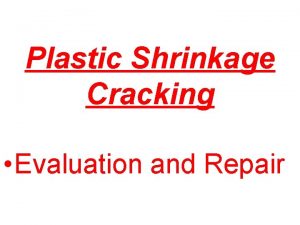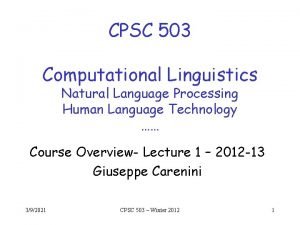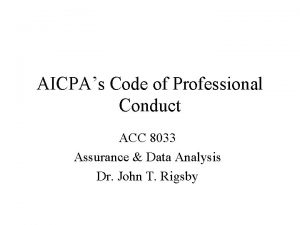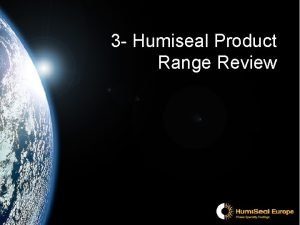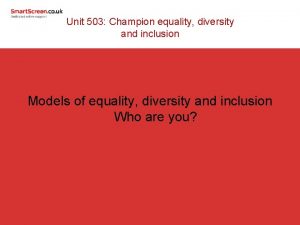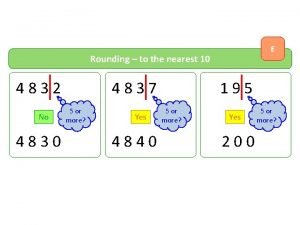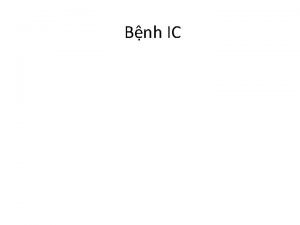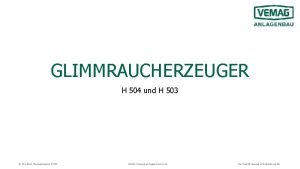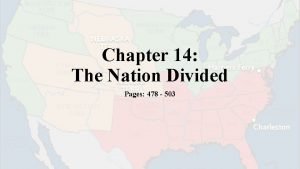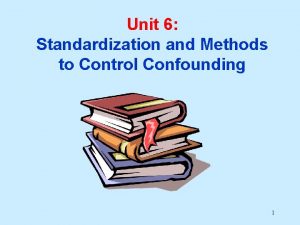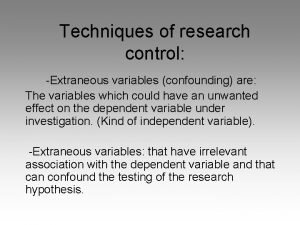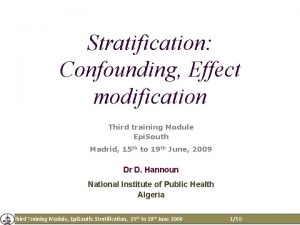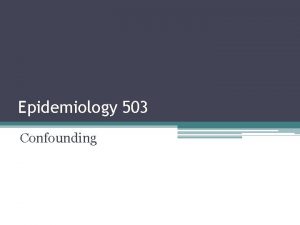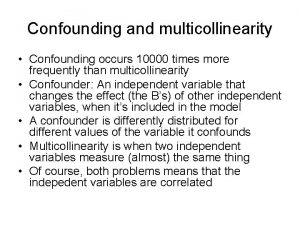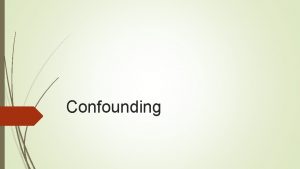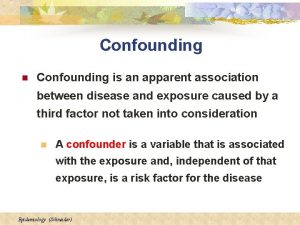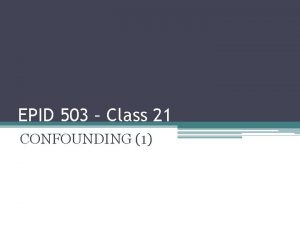Epidemiology 503 Confounding Confounding Situation in which an













- Slides: 13

Epidemiology 503 Confounding

Confounding • Situation in which an association between a given exposure and an outcome is distorted as a result of the influence of a third extraneous variable (confounder)

Example of Confounded Association

Example of Confounded Association

Properties of a Confounder • Associated with the exposure Drinking Smoking • A risk factor for disease among the unexposed Drinking Car Crashes • Not in the causal pathway from exposure to disease Smoking Drinking Car Crashes

Examples of No Confounding E D E C D C E C D

Assessing Confounding in Your Data 1. CALCULATE the CRUDE measure of association between exposure and outcome (RR or OR) 2. ASSESS associations between (a) confounder and exposure and (2) confounder and outcome 3. CALCULATE the stratum specific RRs or ORs 4. COMPARE crude to stratum specific RRs or ORs If measure of association is the same in the strata but different than the crude measure then you have evidence of confounding!

Step 1: Crude association between coffee drinking (E) and cancer (O) Coffee None Total Cancer None Total 165 85 250 735 1015 1750 900 1100 2000 Unadjusted RR= (165/900) (85/1100) =2. 37 “Crude RR”

Step 2 a: Is smoking (C) associated with coffee drinking (E)? Cf+ Cf- Total S+ 800 200 1000 S- 100 900 1000 900 1100 2000 PR for Coffee Drinking Among Smokers vs. Non-Smokers: (800/1000)/(100/1000) = 8

Step 2 b: Is smoking (C) associated cancer (O) among non-coffee drinkers? Ca+ Ca- Total S+ 40 160 200 S- 45 855 900 85 1015 1100 RR for Cancer Among Smokers vs. Non-Smokers who don’t drink coffee: (40/200 )/ (45/900) = 4. 0

Step 3: Is coffee (E) associated with cancer (O) within smoking strata (C)? Non-Smokers D+ D- Total E+ 160 640 800 E+ 5 95 100 E- 40 160 200 E- 45 855 900 200 800 1000 50 950 1000 RR Smoker = (160/800)/(40/200) = 1. 0 RR Non-Smoker = (5/100)/(45/900) = 1. 0

Step 4: Compare stratum-specific RR to crude RR • Smoking confounds the association between coffee and cancer because: ▫ The stratum-specific RRs are equal (1. 0) – though they don’t have to be as equal as we observed ▫ The stratum-specific RRs are NOT the same as the crude RR of 2. 37 • The difference between the stratum-specific and crude RRs is large so we conclude that this is important confounding ▫ Some people use a 10 or 20% rule as a rough metric of “importance”

How to Report Data with Confounders If you have a confounder: • DO NOT report crude OR or RR! • Instead report stratum-specific ORs or RRs • Report the adjusted OR or RR from regression model • Other methods for summarizing stratum-specific ORs or RRs (e. g. , Mantel-Haenszel – a weighted average)
